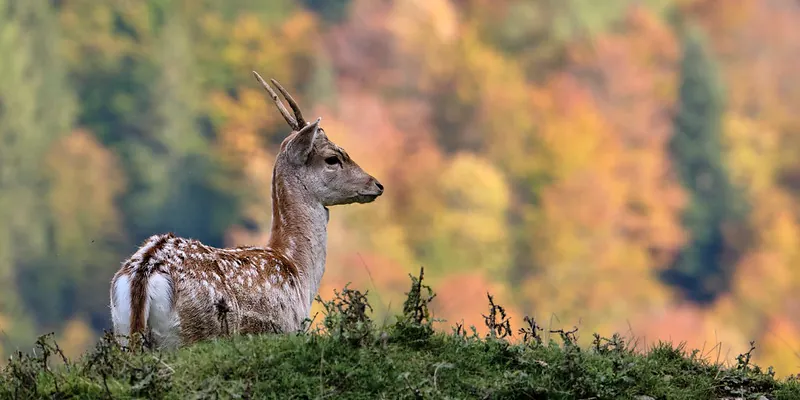Study of deer droppings in North Wales could shed light on the future of woodland conservation 14 Feb 2025

A study of deer droppings in North Wales could shed light on the conversation of woorlands in the UK.
A team from Bangor University with contributions from Dr Markus Eichhorn, School of Biological, Earth, and Environmental Sciences and the Environmental Research Institute, University College Cork, conducted the study amid a growing concern that increasing deer populations are negatively impacting the health and regeneration of UK woodlands.
However, according to the “surprising” findings published in the scientific journal Ecological Solutions & Evidence, deer may in fact be beneficial under some circumstances.
The researchers discovered that the deer are eating large quantities of bramble, which could serve to reduce that plant’s growth and prevent it from outcompeting the saplings of vulnerable tree and shrub species.
The researchers spent two years studying the diet of a fallow deer (Dama dama) population in the Elwy Valley in Denbighshire. This population originated from a large estate when the fences of a deer park were taken down during the First World War.
The deer have since expanded their ranges into the surrounding countryside and are causing concerns for biodiversity conservation, woodland regeneration and timber production.
The research team, based in the Molecular Ecology & Evolution at Bangor laboratory, used a new technology – DNA metabarcoding – to sequence the plant DNA present in around 350 fallow deer dropping samples. These were collected in three woodlands in the Elwy Valley area in spring, summer, autumn and winter between 2019 and 2021.
The research team identified the plants present in the droppings and built a profile of the diet across seasons. They found that bramble (Rubus fruticosus agg.) was the deer’s main food throughout the year, making up 80% of the diet in the winter months. Broadleaf trees and shrubs became more prominent in the diet in the spring and summer, while conifer trees were found in very few samples.
This study was funded by the Natural Environment Research Council, and the Wales Biodiversity Partnership Ecosystem Evidence and Research Needs (BEERN) Programme. Keepers at Welsh Mountain Zoo collected samples of droppings from their captive fallow deer herd, which were used to validate the results from the wild deer dropping samples. The study received computing support from the Supercomputing Wales project, which is part-funded by the European Regional Development Fund via the Welsh Government.
Dr Amy Gresham, who led the study while she was a PhD student at Bangor University’s School of Environmental & Natural Sciences, said:
“The results of this study were surprising. We expected that fallow deer would primarily graze on the abundant grasses in the area’s livestock pasture, diversifying their diet over winter to browse on trees as they would need to compensate for lower food availability outside of the plant growing season.
“In fact, we observed that the diversity of the diet narrowed over winter, with bramble being the most prominent food resource.
“Bramble can protect saplings from deer by providing a spiny barrier to browsing, however bramble can also swamp saplings of tree and shrub species, and rare woodland flowers, that do not tolerate deep shade. Deer herbivory may in fact regulate bramble growth and prevent it from outcompeting saplings and other woodland plants.
“If we can understand more about what deer are eating, we can design targeted management strategies to protect vulnerable tree and shrub species.”
For more on this story contact:
https://besjournals.onlinelibrary.wiley.com/doi/full/10.1002/2688-8319.70008